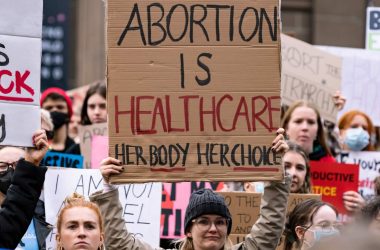Washington, D.C.–(ENEWSPF)–October 8, 2009. The Congressional Budget Office
(CBO) and the staff of the Joint Committee on Taxation (JCT) have just issued a preliminary analysis of the Senate Finance Committee Chairman’s mark for the America’s Healthy Future Act of 2009, incorporating the amendments that have been adopted to date by the committee. That analysis reflects the specifications posted on the committee’s Web site on October 2, 2009, corrections posted on October 5, and additional clarifications provided by the staff of the committee through October 6. CBO and JCT’s analysis is preliminary in large part because the Chairman’s mark, as amended, has not yet been embodied in legislative language.
Among other things, the Chairman’s mark, as amended, would establish a mandate for most legal residents of the United States to obtain health insurance; set up insurance “exchanges” through which certain individuals and families could receive federal subsidies to substantially reduce the cost of purchasing that coverage; significantly expand eligibility for Medicaid; substantially reduce the growth of Medicare’s payment rates for most services (relative to the growth rates projected under current law); impose an excise tax on insurance plans with relatively high premiums; and make various other changes to the Medicaid and Medicare programs and the federal tax code.
According to CBO and JCT’s assessment, enacting the Chairman’s mark, as amended, would result in a net reduction in federal budget deficits of $81 billion over the 2010–2019 period. The estimate includes a projected net cost of $518 billion over 10 years for the proposed expansions in insurance coverage. That net cost itself reflects a gross total of $829 billion in credits and subsidies provided through the exchanges, increased net outlays for Medicaid and the Children’s Health Insurance Program (CHIP), and tax credits for small employers; those costs are partly offset by $201 billion in revenues from the excise tax on high-premium insurance plans and $110 billion in net savings from other sources. The net cost of the coverage expansions would be more than offset by the combination of other spending changes that CBO estimates would save $404 billion over the 10 years and other provisions that JCT and CBO estimate would increase federal revenues by $196 billion over the same period. In subsequent years, the collective effect of those provisions would probably be continued reductions in federal budget deficits. Those estimates are all subject to substantial uncertainty.
By 2019, CBO and JCT estimate, the number of nonelderly people who are uninsured would be reduced by about 29 million, leaving about 25 million nonelderly residents uninsured (about one-third of whom would be unauthorized immigrants). Under the proposal, the share of legal nonelderly residents with insurance coverage would rise from about 83 percent currently to about 94 percent. Roughly 23 million people would purchase their own coverage through the new insurance exchanges, and there would be roughly 14 million more enrollees in Medicaid and CHIP than is projected under current law. Relative to currently projected levels, the number of people either purchasing individual coverage outside the exchanges or obtaining coverage through employers would decline by several million.
Although CBO does not generally provide cost estimates beyond the 10 year budget projection period (2010 through 2019 currently), Senate rules require some information about the budgetary impact of legislation in subsequent decades, and many Members have requested CBO analyses of the long-term budgetary impact of broad changes in the nation’s health care and health insurance systems. However, a detailed year-by-year projection, like those that CBO prepares for the 10-year budget window, would not be meaningful because the uncertainties involved are simply too great. CBO has therefore developed a rough outlook for the decade following the 10-year budget window by grouping the elements of the proposal into broad categories and assessing the rate at which the budgetary impact of each of those broad categories is likely to increase over time.
All told, the proposal would reduce the federal deficit by $12 billion in 2019, CBO and JCT estimate. After that, the added revenues and cost savings are projected to grow more rapidly than the cost of the coverage expansion. Consequently, CBO expects that the proposal, if enacted, would reduce federal budget deficits over the ensuing decade relative to those projected under current law—with a total effect during that decade that is in a broad range between one-quarter percent and one-half percent of GDP. The imprecision of that calculation reflects the even greater degree of uncertainty that attends to it, compared with CBO’s 10-year budget estimates.
These projections assume that the proposals are enacted and remain unchanged throughout the next two decades, which is often not the case for major legislation. For example, the sustainable growth rate (SGR) mechanism governing Medicare’s payments to physicians has frequently been modified (either through legislation or administrative action) to avoid reductions in those payments. The projected savings for the proposal reflect the cumulative impact of a number of specifications that would constrain payment rates for providers of Medicare services. The long-term budgetary impact could be quite different if those provisions were ultimately changed or not fully implemented. (If those changes arose from future legislation, CBO would estimate their costs when that legislation was being considered by the Congress.)
Source: cbo.gov








